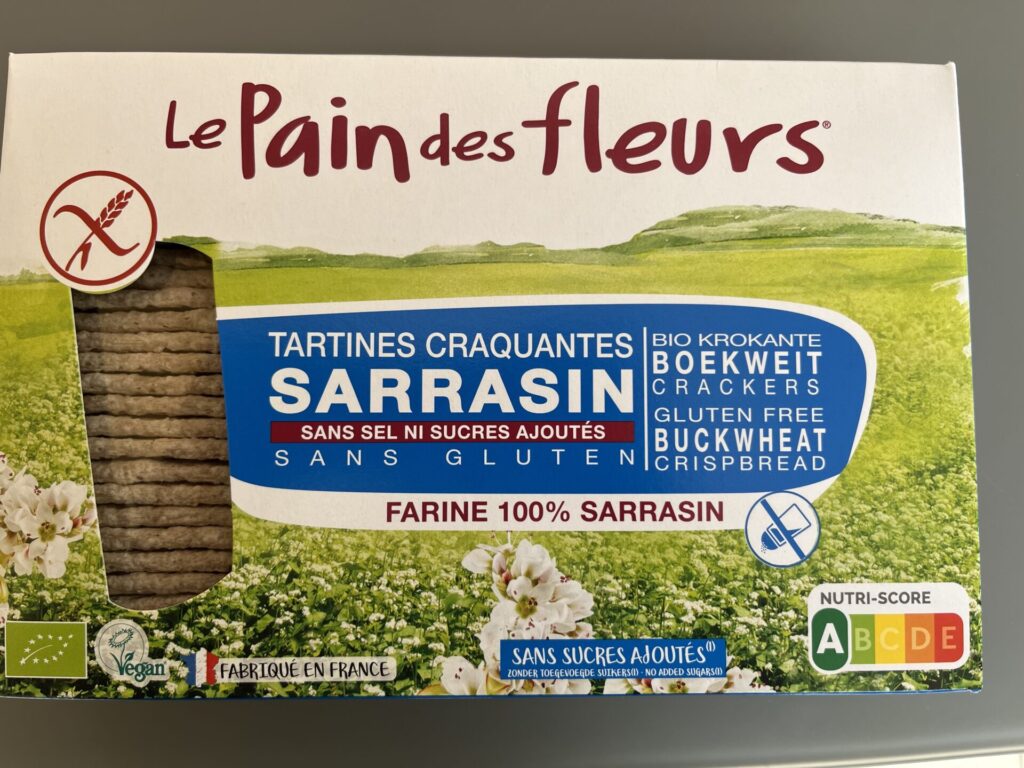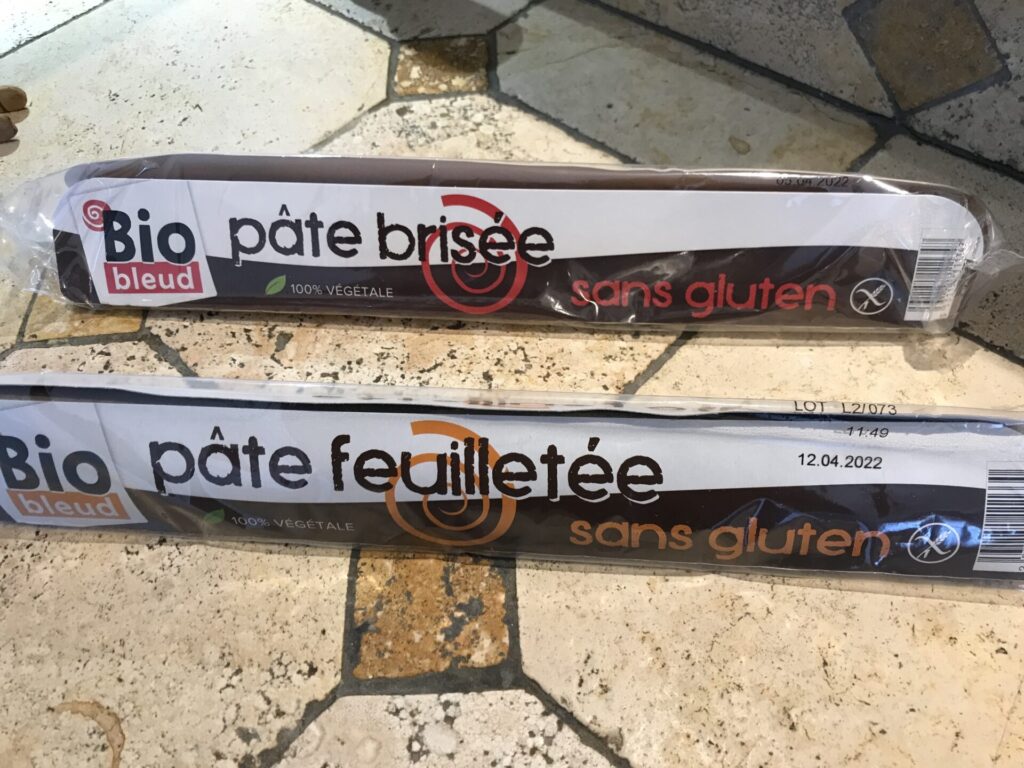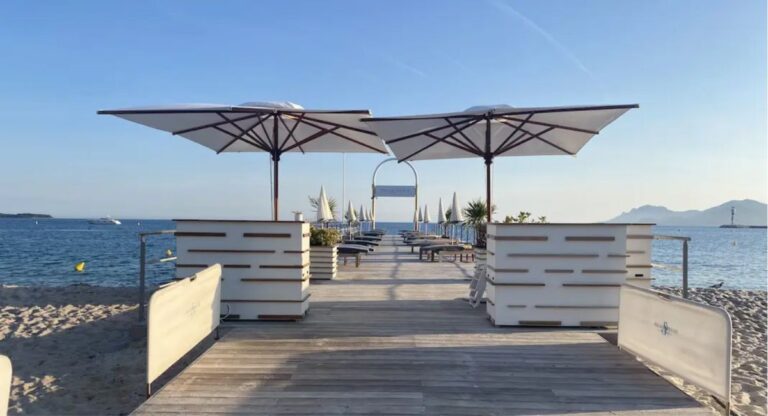If you are considering a trip to France but are gluten-intolerant or have celiac, fear not! France isn’t hard to navigate—it just takes some extra planning. I have celiac disease and spend part of the year in Provence, so I have plenty of tips and tricks to share about eating gluten-free in France, earned the hard-won way.
Gluten in France, by the Numbers
First, let’s distinguish between celiac disease and gluten sensitivity: The first is an auto-immune disease, where even tiny amounts of gluten trigger a reaction that damages the body. The second shares many of the symptoms of celiac disease, particularly gastric distress, but does not create the same level of internal damage.
The prevalence of each is about the same in France as in the U.S. Approximately 1% of the population in each country has celiac disease, and up to another 6% has some form of gluten sensitivity.
Is Gluten-Free a Thing in France?
In the U.S., the gluten-free diet has become something of a fad, with many followers believing that it will help them lose weight. The same is true in France, especially in the chic neighborhoods of Paris. So, it’s possible that if you declare yourself gluten-free to a waiter, you will get a smirk in return. Though that has really changed, it’s so common now.
Usually, explaining that you have to avoid gluten for health reasons will evoke sympathy and understanding. I have had waiters tell me, “Oh yes, my uncle has celiac disease,” and, “My neighbor has a terrible problem with gluten.” One even patted me on the shoulder and said, “You poor thing—if you can’t eat our bread, your problem must be really serious!”
I have found that the knowledge of gluten sensitivities has become more widespread over time, and I can usually find something to eat no matter where I go. Having said that, the range of choices is generally better in larger cities than in rural areas, and also in places popular with tourists.
Tips for Gluten-Free Dining in France
Before traveling to France, do some online research to find restaurants with gluten-free offerings. Two helpful sites are FindMeGlutenFree and TripAdvisor. (For TripAdvisor, click the Gluten Free Options box on the left side under “Dietary Restrictions.” You can also search for the word “gluten” in the comments.) And the WheatlessWanderlust blog has an excellent guide to eating gluten-free in Paris.
Just like in the U.S., gluten-intolerant diners should avoid crowded restaurants during peak hours, when it will be hard to get the attention you need. Try to go early so it will be easier to speak to your server.
Look for smaller restaurants with limited menus and fresh ingredients. Fewer items to prepare usually means they are made from scratch, and you can avoid the industrially produced dishes where gluten lurks. (A surprising number of French restaurants buy dishes pre-made and then reheat them.)
Especially good are cozy little restaurants run by couples. Typically, one spouse is the chef and the other takes your order, so you have a direct line to the kitchen if you a question. (This is a very common set-up in France.)
Best of all, are restaurants with the French government’s Maître Restaurateur designation, where everything is required to be made from scratch. That way you can be sure that the chef knows exactly what is in each dish. Plus, the food is always good. These restaurants usually advertise that they have the Maître Restaurateur title and display this symbol:

Once you have picked a restaurant and are navigating the menu, look for the list of allergens. All restaurants in France are required to identify the presence of 14 allergens, including gluten, for every dish on their menu. A list may be posted on the wall, available in the back of the menu, or provided some other way. If you can’t find this list, ask your server for it.
Unless you have a solid command of French, it is a good idea to bring a French-language gluten dining card that you can hand to the waiter to explain your situation. You can find a free one here, and a more sophisticated one here for modest fee.
Helpful Vocabulary
If you are in a restaurant, here are some helpful phrases. And note that it is polite to start by apologizing for being difficult.
I’m sorry to bother you, but…: Je suis désolé(e) de vous déranger, mais…
I am gluten-intolerant: Je suis intolérant au gluten.
I have celiac disease: Je souffre de la maladie coeliaque.
Is there gluten in this dish?: Y a-t-il du gluten dans ce plat ?
Gluten-Free French Dishes
Many dishes in France are naturally gluten-free. Here are a few that are widely available:
Galettes
These are like crêpes but made with buckwheat flour. There are usually filled with something savory, like ham, cheese, or egg. Many crêperies serve galettes, which are usually safe to eat, but it is wise to check first. Ask if wheat flour has been added to the buckwheat (some places do this) and discuss possible cross-contamination on the griddle if you have celiac disease.
Salade Niçoise
This dish typically includes lettuce, tomato, potato, hard-boiled egg, anchovies, tuna and green beans. A salade Niçoise is my go-to dish for lunch when I can’t find anything else on the menu, because it’s ubiquitous and naturally gluten-free.
Ratatouille
A veggie dish made of eggplant, zucchini, onion, garlic, tomato, and sometimes bell pepper, stewed with fresh herbs until soft and creamy. Cooks will debate vigorously whether the ingredients should be cooked together, or cooked separately and then combined, but they are both excellent. And totally GF.
Socca, Panisse, and Cade
Along the Mediterranean coast of France, from Marseille to Nice, the chickpea is king. Different parts of the coast have a favorite dish made from chickpea flour, olive oil, and water: it’s panisse in the region around Marseille, cade around Toulon, and socca around Nice. They are similar but different, based on the amount of water used and the cooking method. All are delicious and naturally gluten-free, and nothing goes better with a chilled glass of rosé!

Escargots à la Bourguignonne
These are snails cooked in garlic and herb butter. So good!
Macarons
Who can resist these tasty little bites made from sugar and almond flour? Just make sure to ask if any wheat flour has been added.
A Michelin-Starred, Gluten-Free Restaurant
Totally gluten-free restaurants are starting to pop up in France, but there’s only one that has earned a coveted Michelin star: Le Goût du Bonheur. If you are visiting Provence and want a delicious meal and top service, don’t miss it!
Tips for Gluten-Free Shopping in France
If you decide to cook yourself, you need some vocabulary: Blé means wheat, orge means barley, and seigle means rye, the three ingredients to avoid. Sans Gluten means “gluten-free,” so look for those words on products you are considering. Many stores have a special section for their gluten-free products—you’ll see an aisle marked Sans Gluten. There may be other products elsewhere in the store, but this is a good place to start. Also, gluten free bakeries are now popping up all across the country–just do a search in Google for “gluten free bakery” and the name of the town you are visiting, and you will be in for a treat.
For those who must avoid cross-contamination, look for this symbol; it means the product has been certified gluten-free.

If you are trying to read a label and don’t speak French, use the Google Translate app on your phone. Tell the app to translate from French, hit the little camera icon, then point your camera at the label. After a few seconds the original text disappears and is replaced by an English translation. (Google Translate can occasionally be a little wonky, so you can use DeepL for a more accurate translation app.)
While most supermarkets carry gluten-free products, you’ll find more variety and higher quality at a bio (organic) food store. These are very popular in France, and a couple of the big chains are Naturalia and La Vie Claire. Every decent-sized town has at least one bio store, so shop there if you can.
Common Gluten-Free French Products
Breads and Crackers
The gold standard for gluten-free baked goods is Schär, a German company that has specialized in gluten-free breads, pastries, crackers, and more for over 40 years. Schär products are widely available in France, and are increasingly popular in the U.S. Many bio stories also now sell GF baguette, which arrives frozen and is heated to perfection every morning. These baguettes are so good, you won’t miss gluten.
Schär’s crackers are tasty, but, like a lot of gluten-free crackers, they tend to be crumbly. When I want to take crackers with me to a restaurant or a picnic, I prefer what’s called a tartine craquante. It doesn’t have much flavor but it’s very sturdy, a perfect platform for loading on cheese or tapenade or other delicious spreads. You can find them from companies like Le Pain des Fleurs.

Breakfast Cereals
Most bio stores have a variety of breakfast cereals, including different types of granola. You can also find safe gluten-free oatmeal and muesli, from companies like Ma Vie Sans Gluten. Schär, and Le Pain des Fleurs. These are all widely distributed throughout France.
Roll Out Crusts
Many French stores sell gluten-free crusts that have been rolled up with parchment paper and then refrigerated. You take one out of the fridge, unroll it, put whatever you want on top, and bake it. There are two kinds—pâte brisée (shortcrust pastry) for things like tarts and quiches, and pâte feuilletée (puff pastry).

Gluten-Free Shopping at French Markets
One of the glories of France is its tradition of outdoor markets. Nearly every town and village in France has at least one a week, and often more. Be sure to visit one, because nearly everything there will be naturally gluten-free: cheeses, olives, wines, fruits, vegetables, and even roast chicken. Whatever you get can be made at home. Bon appétit!
Keith Van Sickle splits his time between Provence and California. He is the author of the best-selling An Insider’s Guide to Provence. Read more at Life in Provence.






